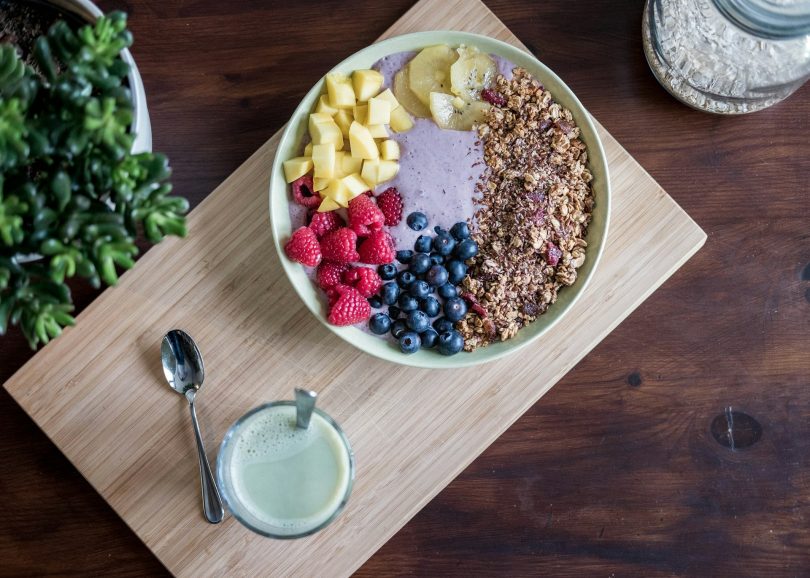For many people, the idea of eating healthier brings thoughts of strict diets, giving up comfort foods, or surviving on salads and smoothies. But healthy eating doesn’t have to mean deprivation. It’s all about balance, smart choices, and small adjustments that can make a big difference over time. You can still enjoy your favorite meals while taking better care of your body.
This article explores seven simple, practical ways to eat healthier without giving up the foods you love. These strategies focus on moderation, mindful choices, and healthier cooking methods that let you enjoy life’s flavors without guilt.
1. Practice Portion Control
One of the easiest ways to start eating healthier is by controlling your portion sizes. Often, it’s not what we eat that’s the problem—it’s how much of it we consume.
Why Portion Size Matters
When you eat large servings, your body takes in more calories than it needs, leading to weight gain over time. On the other hand, when you control portions, you can still enjoy pizza, pasta, or desserts—just in moderation.
Simple Tips for Portion Control
-
Use smaller plates and bowls: This visual trick helps you feel satisfied with less food.
-
Serve portions before sitting down: Avoid eating directly from large containers.
-
Follow the “half plate” rule: Fill half your plate with vegetables or salad, a quarter with protein, and a quarter with whole grains.
-
Eat slowly: It takes about 20 minutes for your brain to realize you’re full, so take your time.
By simply reducing portion sizes, you can still enjoy your favorite dishes without overindulging.
2. Choose Healthier Cooking Methods
How you cook your food makes a huge difference to its nutritional value. Deep frying or using excessive butter and oil can add unnecessary calories and unhealthy fats. Luckily, there are many ways to prepare meals that keep them both tasty and nutritious.
Healthier Cooking Alternatives
-
Grill or bake instead of fry: You get the same flavor with far less oil.
-
Use an air fryer: It mimics frying but uses minimal oil.
-
Steam vegetables: This method preserves vitamins and minerals better than boiling.
-
Use olive oil or avocado oil: They contain healthy fats that are good for your heart.
-
Try herbs and spices: Instead of heavy sauces, season your food with natural flavors like garlic, basil, cumin, or chili flakes.
With these small changes, you can make your meals lighter and healthier—without losing flavor or satisfaction.
3. Make Smart Substitutions
Healthy eating doesn’t mean saying goodbye to your favorite foods—it means finding smarter ways to enjoy them. You can substitute ingredients in your favorite recipes without sacrificing taste.
Examples of Smart Swaps
-
Use whole-grain pasta or bread: They’re higher in fiber and keep you full longer.
-
Switch to low-fat dairy: Use skim milk, low-fat yogurt, or reduced-fat cheese.
-
Replace sugar with natural sweeteners: Try honey, dates, or stevia for desserts.
-
Choose brown rice over white: It has more nutrients and helps regulate blood sugar.
-
Use Greek yogurt instead of mayonnaise: It’s creamy, tangy, and protein-rich.
Even small swaps like these can drastically improve the nutritional value of your meals over time, while still keeping your favorite flavors intact.
4. Plan and Prepare Your Meals
Planning is key when it comes to eating healthier. When you plan your meals in advance, you make intentional choices instead of grabbing the nearest snack or fast food option.
Benefits of Meal Planning
-
Helps you control ingredients and portion sizes.
-
Saves money by reducing impulse food purchases.
-
Keeps you from skipping meals or eating junk food.
-
Makes healthy eating consistent and stress-free.
Tips for Effective Meal Prep
-
Cook in batches: Prepare grains, proteins, and vegetables ahead of time.
-
Pack snacks: Keep nuts, fruits, or granola bars handy for cravings.
-
Use containers: Divide meals into portions to avoid overeating.
-
Create a shopping list: Stick to it to avoid buying unhealthy extras.
Meal prep not only helps you eat better but also gives you control over your diet and schedule.
5. Balance Your Plate
A healthy diet is all about balance, not restriction. Each meal should ideally contain a mix of carbohydrates, proteins, and healthy fats. This combination ensures you get sustained energy, improved digestion, and fewer cravings.
The Balanced Plate Formula
-
Half your plate: Colorful vegetables and fruits for fiber and vitamins.
-
One-quarter: Lean proteins such as chicken, fish, beans, or tofu.
-
One-quarter: Whole grains like quinoa, brown rice, or oats.
-
Healthy fats: Add a small portion of nuts, seeds, or olive oil.
Example of a Balanced Meal
Grilled chicken breast, brown rice, and a side of steamed broccoli topped with olive oil or sesame seeds make a perfect, nutritious meal that’s satisfying and full of flavor.
When your plate is balanced, your body gets all the nutrients it needs—without feeling deprived or hungry.
Read More: The Role of Robotics in Industry 4.0
6. Eat Mindfully and Listen to Your Body
Most people eat out of habit, emotion, or distraction rather than hunger. Mindful eating helps you reconnect with your body’s natural hunger cues and enjoy your meals more.
What Is Mindful Eating?
Mindful eating means paying full attention to your food—its taste, texture, aroma, and how it makes you feel. It encourages slower, more intentional eating that helps prevent overeating.
Ways to Eat Mindfully
-
Avoid distractions: Turn off the TV and put away your phone while eating.
-
Chew thoroughly: Savor every bite and eat slowly.
-
Recognize fullness: Stop eating when you feel satisfied, not stuffed.
-
Notice cravings: Ask yourself if you’re truly hungry or just bored or stressed.
Mindful eating transforms the way you enjoy your favorite meals. It teaches you to eat for nourishment, not just pleasure or habit.
7. Stay Hydrated and Limit Sugary Drinks
Many people mistake thirst for hunger and end up eating more than necessary. Staying hydrated helps control appetite, supports digestion, and improves overall health.
Why Water Matters
Water helps flush toxins, keeps skin clear, and supports every organ in your body. If you’re trying to eat healthier, hydration is one of the simplest yet most powerful habits to adopt.
Healthy Drink Alternatives
-
Water infused with fruit: Add slices of lemon, cucumber, or berries for flavor.
-
Green tea or herbal tea: Great for boosting metabolism and calming the mind.
-
Diluted fruit juice: Mix natural juice with water to cut down on sugar.
-
Avoid sugary sodas: Replace them with sparkling water or fresh juices.
Drinking enough water each day can help you feel full, energized, and more focused, all while supporting your journey toward healthier eating.
Conclusion
Eating healthier doesn’t have to mean giving up the foods you love or following an extreme diet. The secret lies in balance, moderation, and smart choices. By controlling portions, cooking smarter, swapping ingredients, and planning ahead, you can still enjoy your favorite meals guilt-free.
Remember, lasting change doesn’t come from perfection—it comes from consistency. Start with one or two of these habits today, and over time, you’ll notice a significant improvement in how you feel, look, and live.
Healthy eating is not a punishment; it’s a celebration of caring for yourself while still savoring life’s delicious moments.


